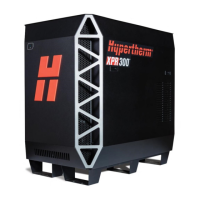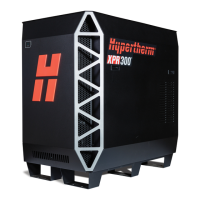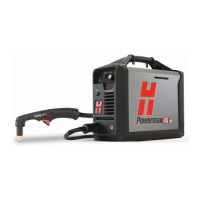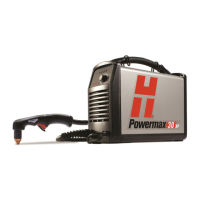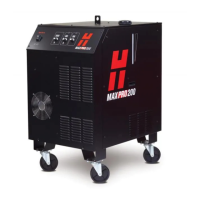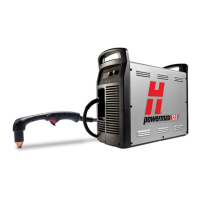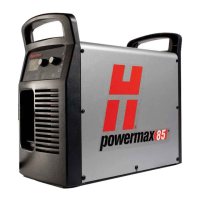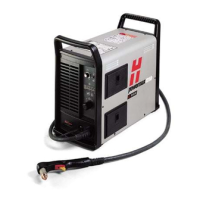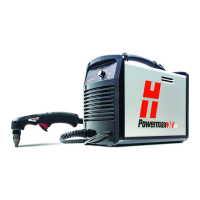Operation
XPR170 Instruction Manual 810060 217
Arc voltage settings for bevel cutting depend on the torch position, metal
thickness, cut speed, and effective cut height. For this reason, cut charts
only include arc voltages for perpendicular-position cutting.
Bevel compensation tables
Hypertherm’s TrueBevel™ software has specialized cut charts known as “bevel compensation
tables.” They can help you get the best results on mild steel with minimal operator intervention.
For information about how to access and use the bevel compensation
tables, refer to the instruction manual that came with your Hypertherm
CAM software.
Hypertherm’s ProNest
TM
software includes bevel-compensation tables.
For information about CNC compatibility requirements and how to use
bevel compensation tables with non-Hypertherm CNCs, contact your
cutting machine supplier or regional Hypertherm Technical Service team.
Ferrous (mild steel) processes
Ferrous (mild steel) processes are developed for cutting A36 mild steel. All mild steel processes are
available with all 3 XPR gas connect consoles (OptiMix, VWI, and Core). Mild steel processes use
O
2
/Air in most cases, except for the following:
Lower-current cutting processes on thinner metals, True Hole, and internal-feature cutting
use O
2
/O
2
.
Argon-assist technology uses argon (Ar) in the shield to increase pierce capacity.
Refer to the XPR Cut Charts Instruction Manual (809830) for information
about the gases used for plasma gas and shield gas during different
processes.
All mild steel processes use Hypertherm’s enhanced LongLife
®
technology that works together with
Arc Response Technology™ to extend the life of consumables by detecting and reacting to
rampdown errors before they occur.
Non-ferrous (stainless steel and aluminum) processes
Non-ferrous (stainless steel and aluminum) processes that appear in the XPR cut charts were
developed using the following metals:
304L and 316L stainless steel
6061 aluminum
HyDefinition vented
processes
The XPR170 cutting system offers HyDefinition vented consumables for 30 A – 170 A
processes. The processes enable the operator to achieve the following results:
• High-quality cuts
• Dross-free cutting (metal dependent)
• Fast cut speeds

